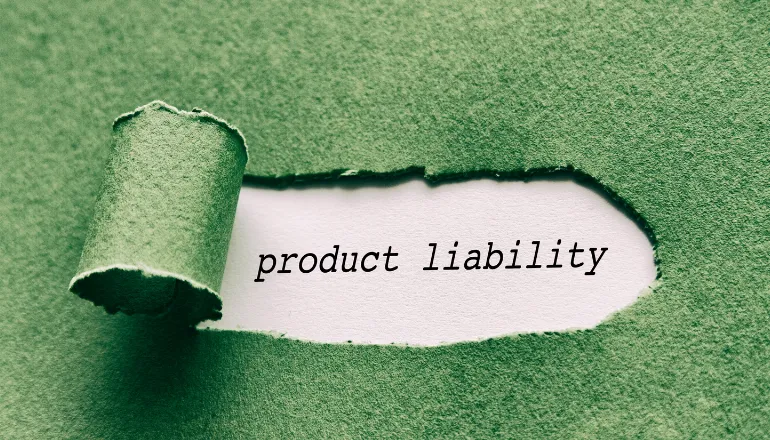Unraveling Product Liability Lawsuits: Understanding Defective Products, Legal Accountability, and Compensation


In the realm of consumer rights and legal accountability, product liability lawsuits stand as a pivotal mechanism for ensuring justice and compensation for individuals harmed by defective products. These lawsuits navigate intricate legal frameworks to address issues stemming from faulty design, manufacturing defects, or inadequate warnings. Understanding the nuances of product liability is crucial for both consumers and manufacturers alike. In this comprehensive exploration, we delve into the intricacies of product liability lawsuits, shedding light on defective products, legal responsibilities, and avenues for compensation.
Defective Products: Identifying the Culprits
Defective products encompass a wide array of items, ranging from automobiles and electronics to pharmaceuticals and household appliances. These products deviate from the expected standards of safety and quality, posing risks to consumers. Common types of defects include design flaws, manufacturing errors, and inadequate warnings or instructions. Design defects originate in the conception phase, rendering the product inherently unsafe even when manufactured correctly. Manufacturing defects, on the other hand, occur during production, resulting in individual units differing from the intended design. Inadequate warnings fail to notify consumers of potential hazards associated with product usage, contributing to accidents and injuries.
Legal Accountability: Holding Responsible Parties Liable
Product liability laws impose legal accountability on various parties involved in the product’s lifecycle, including manufacturers, distributors, and retailers. Manufacturers bear primary responsibility for ensuring product safety, from design to distribution. They are held liable for design defects, manufacturing flaws, and failures to provide adequate warnings. Distributors and retailers, although not directly involved in the product’s creation, can also face liability for selling defective items. Under the doctrine of strict liability, plaintiffs need not prove negligence on the part of the defendant; instead, they must demonstrate that the product was defective and caused harm while being used as intended.
Understanding Legal Theories: Negligence, Strict Liability, and Breach of Warranty
Product liability lawsuits often revolve around three main legal theories: negligence, strict liability, and breach of warranty. Negligence claims assert that the defendant breached a duty of care owed to the plaintiff, resulting in harm. To succeed in a negligence case, the plaintiff must establish four key elements: duty, breach, causation, and damages. Strict liability, as previously mentioned, holds manufacturers and sellers accountable for defective products regardless of fault or intent. This theory prioritizes consumer protection by shifting the burden of proof from the plaintiff to the defendant. Breach of warranty claims arise when a product fails to meet the express or implied promises made by the manufacturer or seller. Warranty breaches can involve both written warranties and implied warranties of merchantability or fitness for a particular purpose.
Navigating Class Action Lawsuits: Consolidating Claims for Efficiency
In cases where multiple individuals suffer harm from the same defective product, class action lawsuits may emerge as a viable recourse. Class actions consolidate similar claims into a single legal action, streamlining proceedings and enhancing efficiency. Plaintiffs in class action suits share legal representation and outcomes, pooling resources to pursue justice collectively. These lawsuits often result in settlements that provide compensation to affected individuals while holding the defendant accountable on a larger scale. However, class actions must meet stringent criteria to proceed, including numerosity, commonality, typicality, and adequacy of representation.
The Role of Expert Witnesses: Providing Technical Insights
Expert witnesses play a crucial role in product liability litigation, offering specialized knowledge and technical insights to assist the court in understanding complex issues. These witnesses, often professionals in fields such as engineering, medicine, or product safety, provide testimony regarding the defectiveness of a product, its potential hazards, and the standard of care expected in its design and manufacture. Expert opinions carry substantial weight in determining liability and assessing damages, helping jurors make informed decisions based on evidence and expertise.
Compensation for Damages: Restoring Balance to Affected Individuals
In product liability cases, compensation serves as a means to restore balance and alleviate the physical, emotional, and financial burdens faced by injured individuals. Damages may encompass economic losses such as medical expenses, lost wages, and property damage, as well as non-economic damages including pain and suffering, emotional distress, and loss of consortium. Punitive damages, intended to punish egregious misconduct and deter future wrongdoing, may also be awarded in cases involving willful or reckless behavior on the part of the defendant. Through equitable compensation, injured plaintiffs seek redress for their losses and hold negligent parties accountable for their actions.
Mitigating Risk: Strategies for Manufacturers and Consumers
For manufacturers, proactive risk mitigation strategies are essential in minimizing exposure to product liability claims. Implementing stringent quality control measures, conducting thorough testing protocols, and providing comprehensive warnings and instructions can help prevent defects and mitigate legal risks. Additionally, maintaining product liability insurance coverage offers financial protection against potential lawsuits. Consumers, on the other hand, can safeguard themselves by exercising due diligence when purchasing products, researching product reviews and safety records, and following usage instructions diligently. In the event of injury or harm, prompt documentation and seeking legal counsel can aid in pursuing rightful compensation.
Ensuring Accountability and Compensation in Product Liability Cases
Product liability lawsuits serve as a cornerstone of consumer protection, holding manufacturers accountable for the safety and integrity of their products. By navigating legal complexities and advocating for the rights of injured individuals, these lawsuits promote accountability, deter negligent practices, and facilitate fair compensation for those harmed by defective products. Through a comprehensive understanding of defective products, legal responsibilities, and avenues for redress, stakeholders can collectively strive towards a marketplace characterized by safety, transparency, and justice. In unraveling the intricacies of product liability, we uphold the fundamental principles of fairness, integrity, and accountability in the pursuit of consumer rights and well-being.





